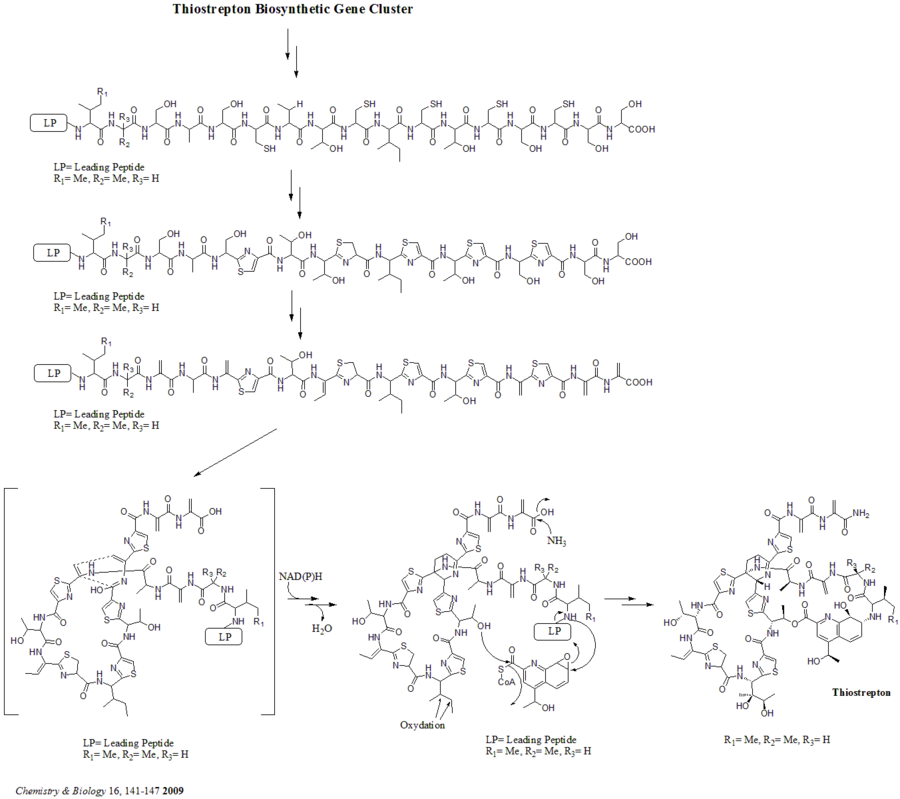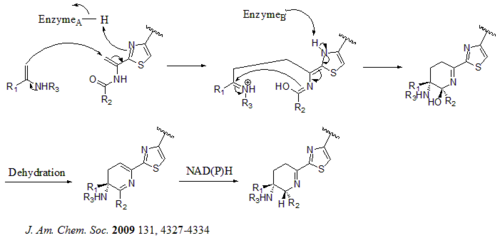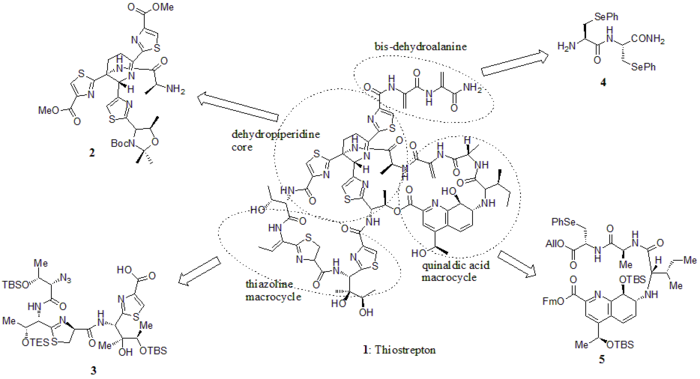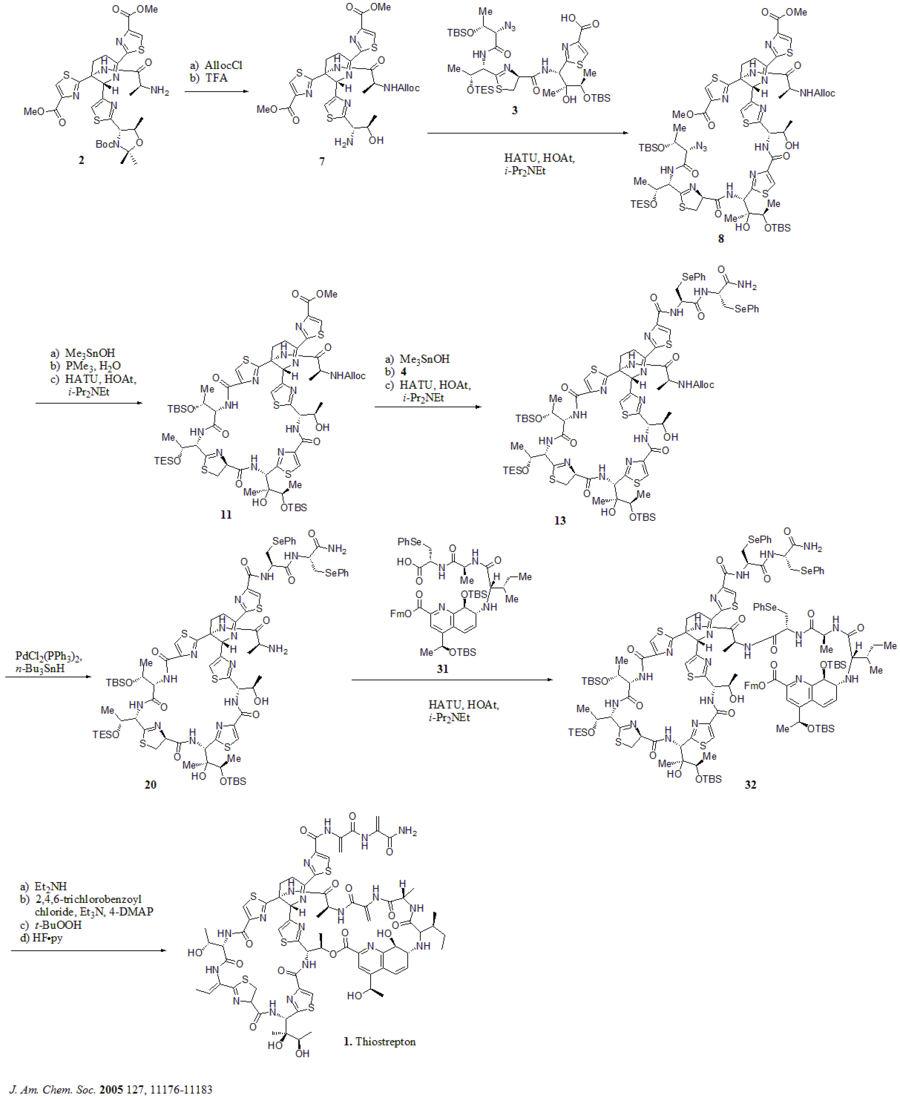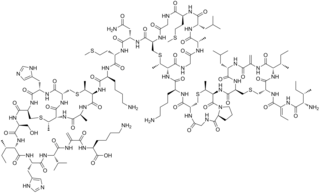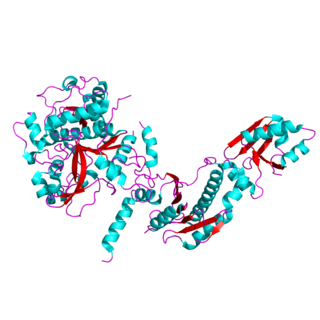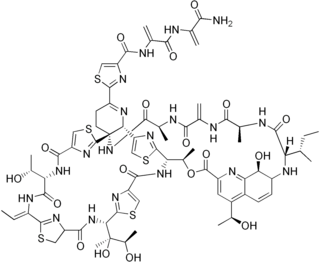 | |
| Names | |
|---|---|
| IUPAC name N-[3-[(3-amino-3-oxoprop-1-en-2-yl)amino]-3-oxoprop-1-en-2-yl]-2-[(1R,8S,11Z,18S,25S,26R,53S,59S)-37-butan-2-yl-18-[(2S,3R)-2,3-dihydroxybutan-2-yl]-11-ethylidene-59-hydroxy-8-[(1R)-1-hydroxyethyl]-31-[(1S)-1-hydroxyethyl]-26,40,46-trimethyl-43-methylidene-6,9,16,23,28,38,41,44,47-nonaoxo-27-oxa-3,13,20,56-tetrathia-7,10,17,24,36,39,42,45,48,52,58,61,62,63,64-pentadecazanonacyclo[23.23.9.329,35.12,5.112,15.119,22.154,57.01,53.032,60]tetrahexaconta-2(64),4,12(63),19(62),21,29(61),30,32(60),33,51,54,57-dodecaen-51-yl]-1,3-thiazole-4-carboxamide | |
| Other names Alaninamide, Bryamycin, Thiactin | |
| Identifiers | |
3D model (JSmol) | |
| ChEMBL | |
| ChemSpider | |
| ECHA InfoCard | 100.014.304 |
| EC Number |
|
PubChem CID | |
| UNII | |
CompTox Dashboard (EPA) | |
| |
| |
| Properties | |
| C72H85N19O18S5 | |
| Molar mass | 1664.83 g/mol |
| Appearance | White to off-white powder |
| Melting point | 246 to 256 °C (475 to 493 °F; 519 to 529 K) |
| Insoluble | |
| Solubility in other solvents | Soluble in CHCl3, CH2Cl2, dioxane, pyridine, glacial acetic acid, DMF. Practically insoluble in the lower alcohols, nonpolar organic solvents, diluted aqueous acids or bases. May be dissolved by methanolic acid or base, but with decomposition. [2] |
| Hazards | |
| GHS labelling: | |
 | |
| Warning | |
| H302 | |
| P264, P270, P301+P312, P330, P501 | |
Except where otherwise noted, data are given for materials in their standard state (at 25 °C [77 °F], 100 kPa). | |
Thiostrepton is a natural cyclic oligopeptide antibiotic of the thiopeptide class, derived from several strains of streptomycetes, such as Streptomyces azureus and Streptomyces laurentii . Thiostrepton is a natural product of the ribosomally synthesized and post-translationally modified peptide (RiPP) class.
